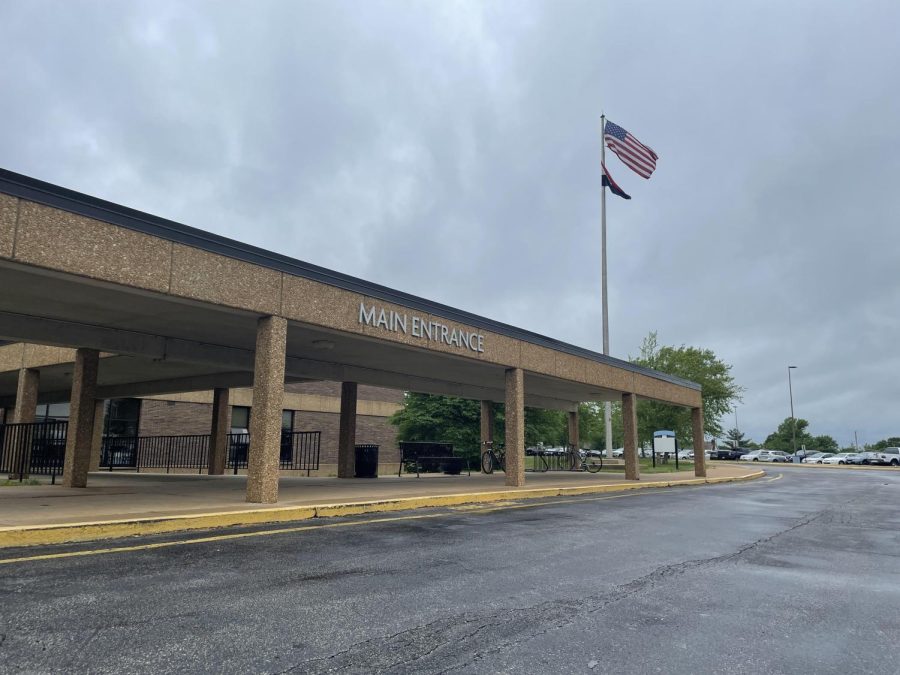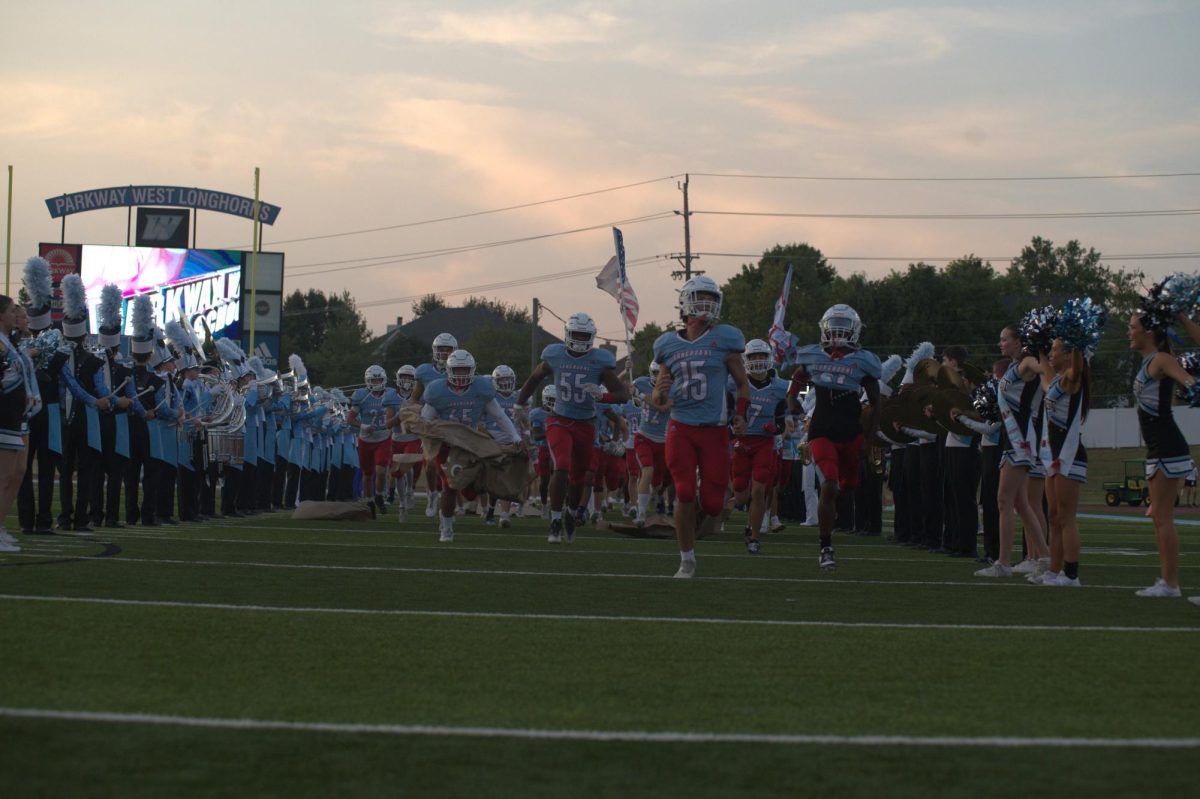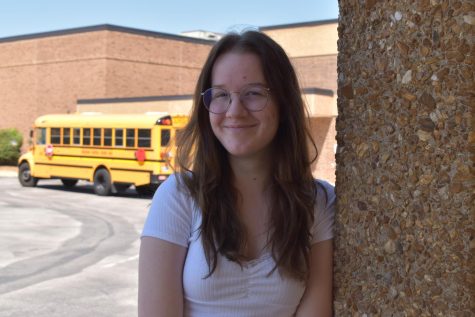On May 24, 2022, an 18-year-old opened fire on Robb Elementary School in Uvalde, Texas. Nineteen students, two adults and the gunman were confirmed dead. Hospital workers are treating multiple other students for injuries. In light of these events, staff and students consider safety in school.
“There wasn’t anything they could do — they were elementary school kids. They didn’t know that they were going to die when they walked into school. They had so much more life left to live; they had things they wanted to do or see. When I was a kid, I wanted to be a firefighter and an astronaut. I had those kinds of dreams, and those kids probably did too, and now they won’t have the chance to explore their options. It’s just over. They’re gone. And it makes me feel sad for feeling lucky that it wasn’t me,” sophomore Molly Masalskis said. “It’s [gotten] to the point where you’re either numb or terrified. It scares me when thinking that it could be us, but I still don’t feel anything [new] because that fear has always been there.”
This shooting was one of at least 27 recorded school shootings and 212 mass shootings in the U.S. since 2022. Since the Columbine High School shooting on April 20, 1999, the Washington Post estimates that over 300,000 students have experienced gun violence.
“I’m numb to [hearing about school shootings], and that’s not a good thing. It’s too normal that someone [might] walk into the school and start opening fire. I wouldn’t say that I feel unsafe at school, but I don’t feel safe,” sophomore Vivian Chen said. “Most school shooters are students from that school. We do drills, but that’s not enough because the school shooters know the drills.”
In recent years, citizens have held various protests and walkouts to advocate for gun control. But conversely, citizens have also held pro-gun lobbying and protests.
“This is pretty fresh in everybody’s mind. Everybody is tired of having the same conversation. Our president, our politicians, our state leaders, I’m tired of them talking about it. It’s time for them to do something about it. It’s a shame that instead of being completely horrified and shocked, it’s just ‘oh, another one.’ We can’t allow that to desensitize us. We still [have to] be completely shocked and outraged. It’s getting hard because just this year, just this month alone, it’s happened multiple times,” mathematics and Computer Science teacher Jason Townsend said.
Typically, police are able to arrest people who commit school shootings. According to a 2018 analysis, 655 out of 100,000 people in the U.S. are in prison. Additionally, an estimated 20% of prison inmates have a severe mental illness.
“We have got to find a way to better address the mental health issues in this country. Obviously, [the] young man who did this yesterday [had] something severely wrong with [him]. Who do we blame? Do we blame the parents? Do we blame his school? We have to find a way to better address the issues that would lead someone to think that this was something that they wanted to do,” Townsend said.
Per Missouri law, Parkway principals conduct two lockdown drills yearly. Typically, the drill involves an “intruder alert” message playing across the PA system while staff and students turn off classroom lights, hide in the corner and lock the door. Additionally, teachers present the “4E” plan: educate, escape, evade and engage.
“I don’t think drills work — most of the time the shooter is going to be a kid, someone who already knows how the system works. When I was little, we were taught to cover our faces with textbooks in case there was a school shooter. Drills are unrealistic; pretending that you’re [not in the classroom] by turning off the light and huddling in the corner of the room isn’t going to do anything. But I don’t know what else we can do. As students and staff, there isn’t much we can do to stop it,” Masalskis said.

Additionally, the Parkway website lists schools’ safety features such as buzz-in systems for visitors, panic buttons in every classroom and intruder-resistant safety film on entrances and windows.
“We’ve not had any issues in the 12 years I’ve been here. That being said, we’re like any other place. It can happen anywhere; I think we have to go in with that premise and then that’s a good reminder to students,” principal Jeremy Mitchell said. “Not that I am worried, but I just want to be cautious and do everything we can. It’s a lot better than when I first got into schools where it was just like ‘hide under the desk.’ Now we realize that maybe that’s not the best option.”
Missouri is classified as a permitless carry state, meaning anyone legally allowed to possess a firearm can carry it without a permit, except for concealed firearms in various government buildings. This includes prisons, hospitals and educational institutions.
“We have a huge problem with our laws when it comes to sentencing and being tough on criminals who break the law with guns. That needs to change dramatically, there has to be a no-tolerance policy. People caught with illegal weapons or use them in felonies have to face severe penalties,” Townsend said. “We have to stop playing politics, stop having certain individuals in our Congress line their pockets with the money of the NRA and the other people who are pushing this, and we need to have serious gun control laws enacted.”




![Gazing up from the stage, junior Joseph McCurdy who played Peter Pan in the school play, Lost Girl, sits next to senior Juliana Rogers, who plays Wendy Darling, during a theater rehearsal. McCurdy’s passion for theater began when he observed a West High production in middle school. “I've been in the high school theater program since I was a freshman. I've always loved theater, but [what prompted me to join] was [when] I went to see [a performance here] when I was in middle school, and it was super cool,” McCurdy said.](https://pwestpathfinder.com/wp-content/uploads/2025/11/IMG_6535-1200x798.jpeg)

![Standing tall, stacked in a precise formation, the cheer team strikes a signature pose during halftime on Sept. 12 at the varsity football game. Nearly a month after this performance, the cheer team performed at the Missouri Cheerleading Coaches Association (MCCA) regional competition on Oct. 4, 2025. “We've all come [to] work together a lot more,” sophomore Elyssa Philippi said. “We're a lot closer than we were [earlier in the season] and going to state has made us closer [in] trying to work with each other, learn [new] skills and make our team better.”](https://pwestpathfinder.com/wp-content/uploads/2025/11/DSC5139-1.jpg)
![Handing out candy to excited trunk-or-treaters, President of the United Nations Children’s Fund club and junior Sara Ashok represents that group. Ashok was eager to participate in this event for multiple reasons. “I really wanted to be a part of the event because I get to help create memories for kids and spend time with my friends, spreading the things [I'm passionate about],” Ashok said.](https://pwestpathfinder.com/wp-content/uploads/2025/11/DSC_8648-1-1200x800.jpg)

![Smiling in a sea of Longhorns, Fox 2 reporter Ty Hawkins joins junior Darren Young during the morning Oct. 3 pep rally. The last time West was featured in this segment was 2011. “[I hope people see this and think] if you come to [Parkway] West, you will have the time of your life because there are so many fun activities to do that make it feel like you belong here. I was surprised so many people attended, but it was a lot of fun,” Young said.](https://pwestpathfinder.com/wp-content/uploads/2025/10/Edited2-1200x798.jpg)
![West High seniors and families listen as a representative of The Scholarship Foundation of St. Louis, Teresa Steinkamp, leads a Free Application for Federal Student Aid (FAFSA) workshop. This session, held in the library, provided guidance on financial aid, scholarships and student loan options. “This event is very beneficial for any seniors who are applying to or considering applying to colleges after high school [because] the cost of college is on the rise for seniors and parents,” college and career counselor Chris Lorenz said.](https://pwestpathfinder.com/wp-content/uploads/2025/09/DSC_4478-1200x778.jpg)
![Senior Kamori Berry walks across the field during halftime at the Homecoming football game on Sept. 12. During the pep assembly earlier that day, she was pronounced Homecoming Queen. “I thought it was nice that the crowd [started] cheering right away. I know [my friends] were really excited for me, and my family was happy because typically non-white people don't win,” Berry said.](https://pwestpathfinder.com/wp-content/uploads/2025/09/DSC7046-Enhanced-NR-1200x798.jpg)



![Sophomore Shree Sikkal Kumar serves the ball across the court in a match against Lindbergh. Sikkal Kumar has been a varsity member of the varsity girls’ tennis team for two years, helping her earn the number two rank in Class 2 District 2.“When matches are close, it’s easy to get nervous, but I [ground] myself by[staying] confident and ready to play,” Sikkal Kumar said.](https://pwestpathfinder.com/wp-content/uploads/2025/11/DSC2801-1200x798.jpg)
![Dressed up as the varsity girls’ tennis coach Katelyn Arenos, senior Kate Johnson and junior Mireya David hand out candy at West High’s annual trunk or treat event. This year, the trunk or treat was moved inside as a result of adverse weather. “As a senior, I care less about Halloween now. Teachers will bring their kids and families [to West’s Trunk or Treat], but there were fewer [this year] because they just thought it was canceled [due to the] rain. [With] Halloween, I think you care less the older you get,” Johnson said.](https://pwestpathfinder.com/wp-content/uploads/2025/10/DSC00892-1-1200x800.jpg)
![Focused on providing exceptional service, sophomore Darsh Mahapatra carefully cleans the door of a customer’s car. Mahapatra has always believed his customers deserve nothing less than the best. “[If] they’re trusting us with their car and our service, then I am convinced that they deserve our 100 percent effort and beyond,” Mahapatra said.](https://pwestpathfinder.com/wp-content/uploads/2025/10/DSC_0018-1200x800.jpg)
![Sophomore Aleix Pi de Cabanyes Navarro (left) finishes up a soccer game while junior Ava Muench (right) warms up for cross country practice. The two came to Parkway West High School as exchange students for the 2025-2026 school year. “The goal for the [exchange] program is to provide opportunities for both Parkway students and our international exchange students to learn about other cultures, build connections and become confident, capable, curious and caring — Parkway’s Four C’s — in the process,” Exchange Program Lead Lauren Farrelly said.](https://pwestpathfinder.com/wp-content/uploads/2025/10/Feature-Photo-1200x800.png)
![Leaning on the podium, superintendent Melissa Schneider speaks to Parkway journalism students during a press conference. Schneider joined Parkway in July after working in the Thompson School District in Colorado. “My plan [to bond with students] is to get things on my calendar as much as possible. For example, being in [classes] is very special to me. I am trying to be opportunistic [meeting] kids [and] being in [the school] buildings. I have all the sports schedules and the fine arts schedules on my calendar, so that when I'm available, I can get to them,” Schneider said.](https://pwestpathfinder.com/wp-content/uploads/2025/09/IMG_5425-1200x943.jpeg)
![Gazing across the stage, sophomore Alexis Monteleone performs in the school theater. The Monteleone family’s band “Monte and the Machine” has been releasing music since 2012, but Alexis started her own solo career in 2024 with the release of her first single, Crying Skies. “My whole family is very musical, [and I especially] love writing [songs with them],” Monteleone said.](https://pwestpathfinder.com/wp-content/uploads/2025/09/DSC7463-1200x798.jpg)
![Leaping through the air, senior Tyler Watts celebrates his first goal of the season, which put the Longhorns up 1-0 against the Lafayette Lancers. Watts decided to play soccer for West for his last year of high school and secured a spot on the varsity roster. “[Playing soccer for West] is something I had always dreamed of, but hadn’t really had a good opportunity to do until now. It’s [really] fun being out [on the field], and I’m glad I decided to join the team. It’s just all about having fun with the boys and enjoying what time we have left together,” Watts said.](https://pwestpathfinder.com/wp-content/uploads/2025/09/DSC_1951-1200x855.jpg)

![Shifting global trade, President Donald Trump’s tariffs are raising concerns about economic stability for the U.S. and other countries alike. “[The tariffs are] going to pose a distinct challenge to the U.S. economy and a challenge to the global economy on the whole because it's going to greatly upset who trades with who and where resources and products are going to come from,” social studies teacher Melvin Trotier said.](https://pwestpathfinder.com/wp-content/uploads/2025/05/MDB_3456-1200x800.jpg)
